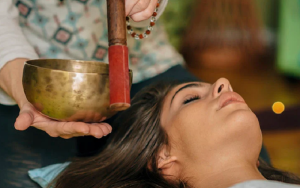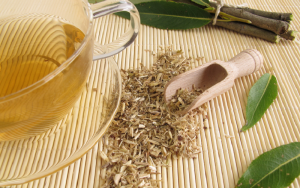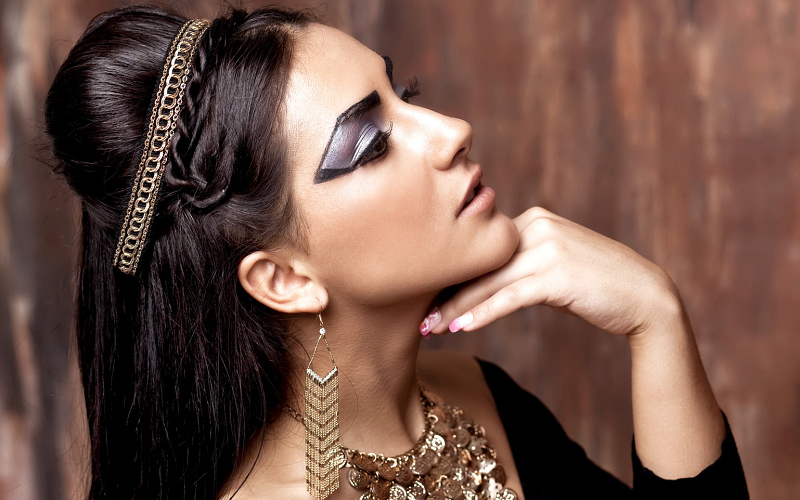
Cleopatra VII, the last active pharaoh of Egypt, had a radiant beauty that has been a subject of fascination for centuries. Known for her intelligence and allure, Cleopatra was not just a charismatic ruler, but she was also famous for her beauty regimen, which still piques interest today.
In the bustling world of modern cosmetics, with its complex formulations and high-tech ingredients, we often forget that skincare has deep roots in history. Ancient civilizations like Egypt had their own unique and surprisingly sophisticated skincare practices, and among these, Cleopatra’s regimen stands as a testament to the power of natural ingredients.
Contents
The Historical Context of Cleopatra’s Skincare
Understanding the historical context of Cleopatra’s skincare routine is crucial for a comprehensive exploration of her beauty regimen. Ancient Egypt was a civilization that placed high importance on aesthetics and personal hygiene. Cleopatra, being a woman of immense influence and power, was at the forefront of these practices.
Brief Introduction of Cleopatra and Her Influence on Beauty Standards
Born in 69 BC, Cleopatra VII was the last active ruler of the Ptolemaic Kingdom of Egypt, a remarkably powerful woman who ruled as pharaoh. She was not only known for her political acumen and intelligence but also her captivating beauty and elaborate skincare and beauty routines. Her beauty regimen, particularly her skincare, was said to be so effective that it has become the stuff of legends. Even today, her name is often synonymous with timeless beauty and meticulous self-care.
Overview of Ancient Egyptian Culture and Cosmetics
The ancient Egyptians had a sophisticated understanding of cosmetics and skincare. Their practices were not simply for aesthetic enhancement; they also served practical purposes such as protection from the harsh desert climate, as well as religious and spiritual symbolism. Beauty treatments, including skincare routines, were seen as a form of reverence to the gods.
Their cosmetics ranged from oils and creams used for moisturizing and protecting the skin, to the famous kohl used for lining the eyes. Materials like malachite and galena were ground to create eyeshadow and eyeliner, while clays and naturally occurring pigments were used for blush and lipstick.
Brief Discussion on the Beauty Standards During Cleopatra’s Time
During Cleopatra’s era, beauty standards emphasized a harmonious balance between physical aesthetics, spiritual well-being, and overall health. This was reflected in the meticulous beauty routines of the time, which focused on the entire body, including the skin, hair, and nails.
The skin was particularly important, with skincare practices focusing on cleansing, nourishing, and protecting it from the desert sun. Maintaining a smooth, moisturized, and blemish-free complexion was considered beautiful.
Historical Evidence of Cleopatra’s Skincare Regimen
Cleopatra’s beauty regimen is steeped in history and mythology, with references scattered across various ancient writings and archaeological findings. For instance, the Roman author and naturalist Pliny the Elder wrote about her baths of ass’s milk in his book, “Natural History”.
From ancient papyrus scrolls and Greek and Roman texts, we gather that Cleopatra regularly used natural ingredients such as honey, aloe vera, Dead Sea salts, and almond oil in her skincare. These ingredients served various functions, including cleansing, moisturizing, exfoliating, and even treating skin conditions.
While there’s an element of speculation involved due to the passage of time, these accounts provide us with valuable insights into the beauty rituals of the time and specifically, the skincare routine of the iconic Cleopatra [1].
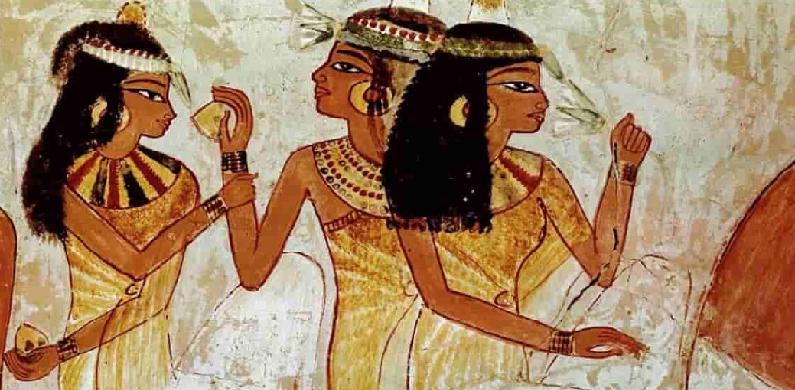
Ingredients of Cleopatra’s Skincare Routine
Cleopatra’s skincare regimen incorporated an array of natural ingredients that were locally sourced and rich in beneficial properties. These ingredients were integral to maintaining her radiant complexion and are still revered in skincare practices today for their timeless benefits.
Milk and Honey: Cleopatra’s Signature Bath
Milk and honey were the starring components of Cleopatra’s most famous beauty ritual – her indulgent milk baths. It’s said that she regularly bathed in donkey milk infused with fresh honey and almond oil. The lactic acid in milk acts as a gentle exfoliator, breaking down dead skin cells, while honey, being a natural humectant, retains moisture, leaving the skin soft and hydrated.
Dead Sea Mud: Natural Mineral Resource
Dead Sea mud and salts were also integral to Cleopatra’s skincare routine. The mud and salts from the Dead Sea are incredibly mineral-rich, containing high levels of magnesium, calcium, and potassium. These minerals have several skincare benefits, including detoxifying, exfoliating, and nourishing the skin. Historical records suggest that Cleopatra even established a cosmetics and pharmaceutical factory on the shores of the Dead Sea [2].
Alabaster: The Ancient Moisturizer
Alabaster, a soft, smooth stone, was often used in Egypt to store precious oils and balms due to its cooling properties. Cleopatra was known to use creams and lotions stored in alabaster jars, which would have kept the contents cool and soothing for the skin.
Essential Oils: Luxurious Touch to Cleopatra’s Skincare
Cleopatra’s skincare routine was also rich in essential oils, including frankincense, myrrh, rose, and almond oil. These oils, luxurious and fragrant, were not only used for their scent but also for their diverse benefits. They helped to keep her skin moisturized, healthy, and radiant, while also offering therapeutic and aromatherapy benefits [3].
Aloe Vera: Nature’s Healing Agent
Aloe Vera, a common plant in Egypt, was another key ingredient in Cleopatra’s skincare. Known for its healing and soothing properties, aloe vera is excellent for skin hydration and can help soothe and heal skin irritations. Cleopatra is said to have applied aloe vera gel to her skin as a moisturizer and treatment for any skin issues.
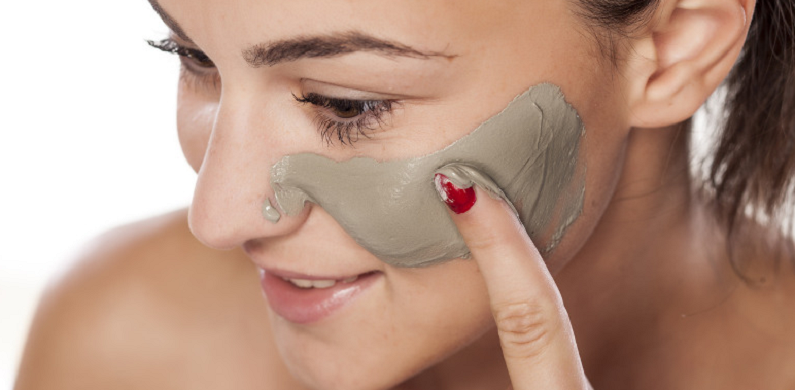
Cleopatra’s Skincare Regimen
Drawing upon the bounty of nature, Cleopatra’s skincare routine was a thoughtful assembly of rituals aimed at preserving and enhancing her beauty. Her skincare regimen comprised several steps, each enriched with potent natural ingredients.
Cleansing: The Ritual of the Milk and Honey Bath
Cleansing was the first step in Cleopatra’s skincare routine, and the process was far from ordinary. Instead of a simple face wash, Cleopatra is said to have bathed in a concoction of milk and honey. This bath served to cleanse her skin, gently remove dead cells due to the lactic acid in the milk, and hydrate her skin thanks to the natural humectants in honey.
Toning: Application of Rose Water
After the milk and honey bath, Cleopatra likely used some form of a toner to balance her skin’s pH and further hydrate her skin. Although historical documents do not specifically mention toning, considering the advanced skincare practices of the Egyptians, some form of this step is plausible. Rosewater, a byproduct of the production of rose oil, could have served this purpose, given its popularity in the Middle East and its calming and balancing skin benefits.
Moisturizing: Alabaster and Olive Oil Usage
Moisturizing was a crucial step in Cleopatra’s skincare routine. She is said to have used an elaborate mixture of beeswax, olive oil, and rosewater stored in alabaster jars. Olive oil is rich in nourishing fatty acids and antioxidants, which can moisturize and protect the skin from environmental damage.
Nourishing: Essential Oils and Their Effects
Cleopatra also incorporated various essential oils into her skincare routine for their nourishing properties. These oils, including rose, frankincense, and myrrh, were used to keep her skin healthy, radiant, and fragrant. These oils also had therapeutic properties, promoting relaxation and mental well-being.
Healing: Aloe Vera as a Soothing Agent
Finally, Cleopatra used aloe vera for its healing properties. If she had any skin irritations or issues, she applied aloe vera gel to soothe and heal the skin. Aloe vera has been used since ancient times for its potent healing properties and would have been an excellent natural remedy for a variety of skin conditions [4].

Modern Interpretations and Applications of Cleopatra’s Skincare
Cleopatra’s skincare routine, while firmly rooted in her time, has enduring relevance and has influenced modern beauty practices in significant ways. By drawing inspiration from her regimen, we can rediscover the power of natural ingredients and rethink our approach to skincare.
Comparison of Cleopatra’s Ingredients with Modern Skincare Products
Many of the ingredients used by Cleopatra remain popular in modern skincare products. Honey, aloe vera, and essential oils, for instance, are frequently found in cleansers, moisturizers, and serums today. Dead Sea mud is also a key ingredient in many facial masks and body wraps for its detoxifying properties.
Moreover, the concept of milk baths has seen a resurgence in the beauty industry, with several brands offering milk-based bath powders and salts. These products echo Cleopatra’s luxurious milk and honey baths, showcasing the timeless appeal of her beauty rituals.
The Relevance of Cleopatra’s Skincare Routine Today
While skincare technology has evolved dramatically, the basic principles of Cleopatra’s skincare routine — cleanse, tone, moisturize, nourish, and heal — remain as relevant today as they were in ancient times. Her routine is a testament to the value of a consistent skincare regimen that caters to all aspects of skin health.
Her focus on natural, locally-sourced ingredients also aligns with the modern shift towards green beauty and sustainability. Today, more consumers are gravitating towards natural, organic, and eco-friendly products, a trend that resonates with Cleopatra’s approach to skincare [5].
DIY Recipes Inspired by Cleopatra’s Skincare Routine
Cleopatra’s skincare routine also serves as inspiration for DIY skincare recipes. You can replicate her famous milk and honey bath at home by adding a cup of milk and a few tablespoons of honey to warm bathwater. A simple face mask can be made using Dead Sea mud (available online) mixed with a little water.
The Impact of Cleopatra’s Skincare on Beauty Culture
Cleopatra’s influence extends beyond her historical role as a queen and transcends into the realm of beauty and skincare. Her dedication to skincare and her innovative use of natural ingredients have had a lasting impact on beauty culture, shaping trends and practices that persist even in the contemporary world.
The Legacy of Cleopatra in Modern Beauty Culture
Cleopatra’s commitment to skincare and her refined beauty rituals have left an indelible mark on beauty culture. Her rituals and ingredients have become part of the collective beauty knowledge passed down through generations. Today, her name is synonymous with beauty and self-care, and her techniques continue to inspire modern skincare practices.
Her preference for natural ingredients and sustainable practices resonates with modern trends toward green beauty and eco-conscious skincare. As a historical figure, she’s a testament to the power of natural beauty rituals, demonstrating that effective skincare does not necessarily require synthetic ingredients or complex formulations.
Cleopatra as a Symbol of Empowered Beauty
Cleopatra is also an enduring symbol of empowered beauty. As a woman who ruled an empire, she understood the value of self-care and made her beauty routine an integral part of her life. She was not just a passive recipient of beauty standards, but an active participant in shaping them.
This image of Cleopatra as a powerful, beauty-conscious woman continues to inspire women today. Her story reminds us that self-care and beauty rituals can be a form of empowerment, a way to celebrate our individuality and take control of our personal aesthetic.
The Influence of Cleopatra’s Skincare in Pop Culture
Cleopatra’s skincare practices have also permeated popular culture, with countless references in movies, books, and even fashion. From Elizabeth Taylor’s iconic portrayal of Cleopatra in the 1963 movie to the endless number of beauty products named after her, Cleopatra’s influence on beauty culture is pervasive and enduring.
References
[1] How ancient Egyptian cosmetics influenced our beauty rituals
[2] How to Use Dead Sea Mud
[3] Cosmetics and Perfumes, Egypt, 10,000 BCE
[4] Ancient Egypt’s Most Indulgent Beauty Secrets
[5] From Cleopatra to Clean Beauty



